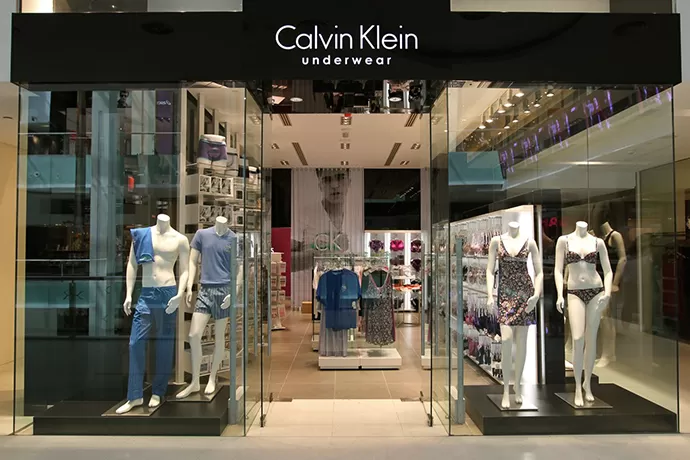The importance of data in ecommerce cannot be overstated. It’s the difference between creating fact-based marketing strategies, and making decisions led by ‘gut feelings’. A growing number of brands are using ecommerce analytics to optimise performance and revenue. But how, exactly, might these intuitive platforms be giving them the edge?
The truth is, using analytics is no longer about staying a step ahead of competitors. It’s now also aboutkeeping up, as more and more ecommerce professionals invest in tools that save time and resources. According to McKinsey research, brands who adopt new technology now will be better placed to achieve future success. Here are some of the ways ecommerce analytics will help…
Product treatment by ecommerce analytics
Ecommerce analytics aren’t just useful for tracking behaviours of brands. Applied to ecommerce, they unlock insights on how consumers are treating your products. For example, the right tool will be able to identify exactly the projection a particular customer is heading, to be able to present products to that individual, especially those with the highest potential buying propensity, as it arrives. This to the exclusion of every other competitor, unless exactly the same pattern is occurring on their site, they have the same customer, and have the software to utilise it.
Software that is able to do this is called predictive personalisation software (PPS). It utilises an artificial intelligent algorithm, and machine learning, on the information being captured. Not only purchase history, but navigation and sequential data on actions unique to that individual consumer, when they make those purchases. For example, if all purchases meet with a criteria where perhaps an item is visited 3 times, or a predilection toward matching sequence in fashion beauty, for example brand loyalty, or style, colour, cut etc. Without data and the algorithm, these lucrative gifts for revenue to the retailer are lost.
Understanding customer product reaction
When looking at the fragrance market, a surprising 50% of products are missing ratings, despite reviews having a dramatic effect on conversions. According to Achievable, products with reviews are 270% more likely to be bought. That number jumps to 380% for high priced products, like prestige scents.
By using an ecommerce review platform, you can track how your products stack up on the digital shelf, and channel learnings into actions for improvement. It may be that adjustments need to be made at a formulation or price level, but you could also find that reviews help to highlight gaps or errors in your on-site content. For example, a reviewer might express surprise at the texture of a cleanser, or confusion over how to use their new face toning tool. These are signs that product copy would benefit from some amendments.
Optimising product communication
Speaking of content, ecommerce analytics can help you optimise your product pages; a key step that, currently, two out of five brands are failing to do. To market beauty online, it’s vital to bring makeup, skincare, hair care and fragrance to life through the screen, by way of compelling copy and images that mimic the sampling experience.
So, where do analytics come in? Using a Product Information Management (PIM) tool enables marketers to establish a single source of truth for each SKU, collating the very best images, videos and descriptions in one place. This helps you keep high volumes of information organised, allows you to efficiently review and optimise content, and makes it easy to distribute product details to ecommerce retailers.
Coming back to PPS, it is a wholly autonomous marketing solution, that communicates directly personally, based on that individual’s needs, wants and desires, not the retailers. It perpetually changes and updates live as new data arrives, according to the whims and nuances of perpetual visits by that individual. PPS takes no regard, whatsoever, of what any other customer is doing – segmenting being abhorrent to the process.
Being devoid of human input should offer an immmidate appreciation that the ROI has just skyrocketed. No human cost, the most expensive commodity involved in marketing. But in addition what comes with it is 24/7 attention to detail, data accuracy, individual personalisation – not what anyone else is doing, therefore all these added to gather deliver the highest ROI in ecommerce marketing today, according to McKinsey.
Benchmarking your competitors
As well as looking at your own brand’s performance, ecommerce analytics allow you to benchmark against competitors, so you can evolve your digital strategy. It can help you spot areas of improvement, and identify quick wins across various touchpoints. So what should you be benchmarking? These are the key areas for eTail:
- Quality of content and quantity of assets
- Pricing and promotions
- Co-op advertising and share of voice
- Sales performance
Guiding product development with data
In the ecommerce world, it can be tempting to let trends steer perpetually toward new product lines, assuming people always want new and improved, and different, after all they’re buying from other sites aren’t they? You’re in an industry that’s built on buzz, where every day, a new jacket, fragrance or fizzy-drink goes viral. However, while trends data can indeed pave the way to brand success, using ecommerce data analytics is also vital to strategic innovation.
Take Charlotte Tilbury, for example. Their cult-classic Pillow Talk collection grew from a single lipstick into an extensive portfolio of eye, lip and cheek essentials. This wasn’t born from a trend, but rather the knowledge that Pillow Talk fever was catching on, opening a window of opportunity for a full-blown franchise.
Layering ecommerce data analytics with trends data can highlight similarly lucrative possibilities, pulling together a scattering of data that highlights what’s working for your brand. This prevents new products from being developed based on blink-and-you’ll-miss-it trends. Instead, you’re able to create a 360-degree plan, to predict how beauty launches (and their price) might be received.
A 30-day free predictive personalisation software trial is available here.
Article Classification:






